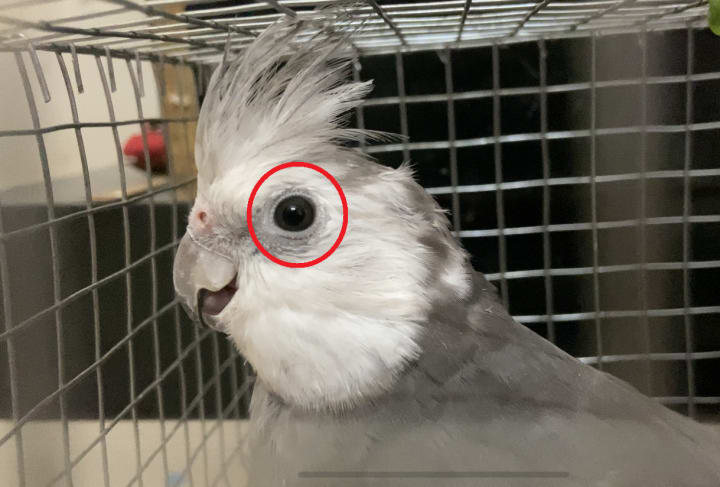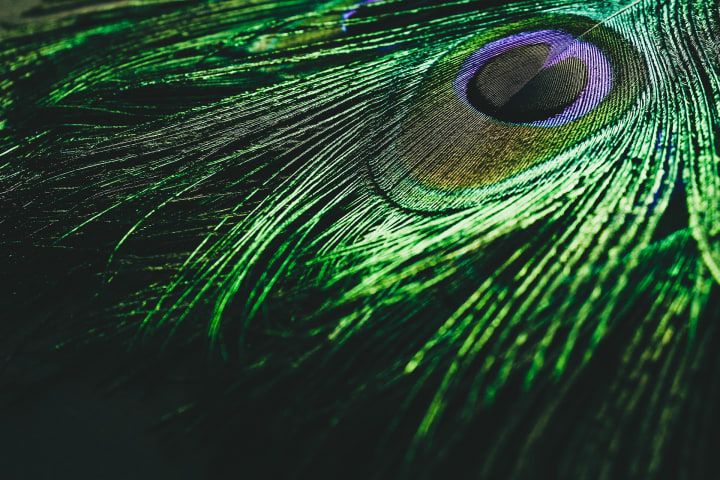Amber Eye Cockatiels
Cockatiel mutation having a ring outer their eye


Cockatiels:
Cockatiels (Nymphicus hollandicus) are a small parrot species native to Australia. They are a popular pet bird due to their friendly and sociable nature, making them a great companion for people of all ages. They are also known for their distinctive crest or "mohawk" of feathers on their head which they can raise or lower to express their mood. Cockatiels come in a variety of colors including grey, albino, lutino, and pied. The most common color is grey, which can range from light to dark. Albinos are completely white with red eyes, while lutinos are completely yellow with red eyes. Pied cockatiels have a combination of colors, with a white or yellow body and various colored spots on their wings and tail.
Cockatiels are known for their ability to learn to whistle and mimic simple phrases. They are relatively low maintenance, but still require daily interaction and a varied diet of seeds, fruits, and vegetables. A good diet for cockatiels should include a mix of seeds, fresh fruits, and vegetables. In addition, they need a source of calcium, such as cuttlebone or mineral blocks.
Caring for a pet cockatiel can be a rewarding experience, they are known to bond closely with their owners and can live up to 15-20 years with proper care. They make great companions for people of all ages, and their playful and affectionate nature make them a great addition to any household.
Amber Eye:
Amber eye, also known as yellow eye, is a genetic variation that occurs in some animals, including birds, cats, dogs, and horses. In birds, this variation is characterized by the iris of the eye having a yellow-orange color instead of the typical dark brown. This is a result of a genetic mutation and is considered a desirable trait in the breeding of some species, such as cockatiels. The color of the eye does not affect the animal's vision or overall health.
The genetic mutation that causes amber eyes is inherited in a recessive manner, which means that the trait is only expressed when an animal receives two copies of the gene, one from each parent. If an animal only receives one copy of the gene, it will have the typical dark brown eye color.
In some species, like cockatiels, different variations of the amber eye coloration can be seen depending on the intensity of the color, some are more yellow than others. This variation can also be combined with other mutations that affect the color of the feathers, such as albinism and lutino.
Amber eye is not only restricted to birds, but it can also occur in cats, dogs, and horses. In cats, the yellow eye color is caused by a different genetic mutation than in birds. It is important to note that, while the color of the eye is a unique and interesting feature, it is not considered a critical aspect when selecting a companion animal. The health, personality, and overall well-being of the animal should always be the primary consideration.
Conclusion:
The cockatiel in the above shown picture was a bird of mine (author) which was born from a White face Lutino (Albino) father and a White Face pied Mother. The activities of the bird was never different from other cockatiels without Amber eyes. I researched about this many times in the internet and found very less answers regarding this trait. Then I kept researching about this in many blog pages and found that this varieties of birds are very rare and can be found in markets at a very higher prices only. I was literally shocked after getting the blog red. Then I decided to keep this bird in order to produce more Amber eyed cockatiels.
But as a matter of fact I failed, He bred 3 clutches with a White Face Lutino (Albino) female and Hatched more than 3 chicks in each clutch but I was shocked that I didn't find any Amber eyed cockatiel chicks from him. Then I kept researching and found that,
"The genetic mutation that causes amber eyes is inherited in a recessive manner, which means that the trait is only expressed when an animal receives two copies of the gene, one from each parent."
Till now I care them to my best as I always because,
"Watching birds has become part of my daily meditation affirming my connection to the earth body." - Carol P. Christ".

Thank You!
About the Creator
KARTIS
True passion for technology is not just about knowing how it works, it's about understanding how to make it work for you.
Enjoyed the story? Support the Creator.
Subscribe for free to receive all their stories in your feed. You could also pledge your support or give them a one-off tip, letting them know you appreciate their work.






Comments
There are no comments for this story
Be the first to respond and start the conversation.